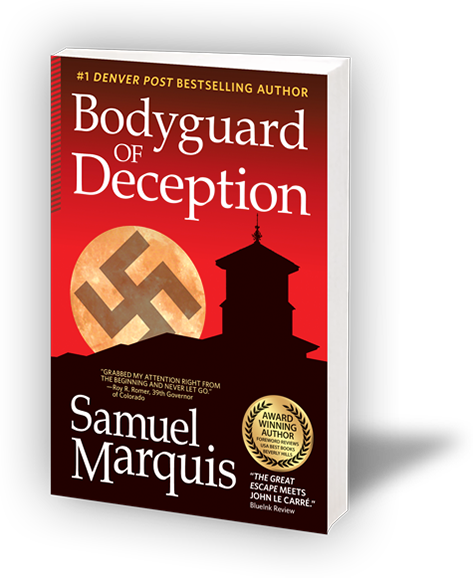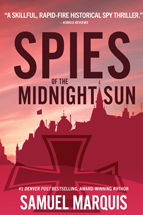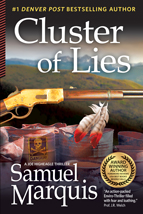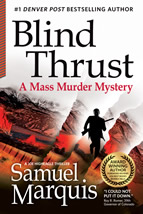There are numerous real-life American and German characters in Bodyguard of Deception, Book 1 of my World War Two Trilogy. But it is the British “Double Cross” spymasters in the novel who steal the show. For those who don’t know, the Double Cross System or XX System, was a World War II counter-espionage and deception operation of the British Security Service, a civilian organisation usually referred to by its cover title MI5. German agents in Britain – real and false – were captured, turned themselves in or simply announced themselves and were then used by the British to broadcast mainly disinformation to their Nazi controllers. Its operations were overseen by the Twenty Committee under the chairmanship of John Cecil Masterman; the name of the committee comes from the number 20 in Roman numerals: “XX” (i.e. a double cross).
Let’s face it, no one does espionage like the Brits (WWII spymaster Ian Lancaster Fleming and his iconic literary creation James Bond anyone?). With that in mind, most of His Majesty the King’s characters in my novel were either actual Double Cross spymasters or major contributors to the deception during the critical days leading up to the D-Day assault on Hitler’s Festung Europa. Most prominent among them was Scottish MI5 intelligence officer Thomas Argyll “Tar” Robertson, whom the astute reader will recognize that I have only superficially disguised in the novel as Lieutenant Colonel Timothy Abernathy MacGregor, or “Tam” MacGregor. The real-life Tar Robertson really did wear a Glengarry cap and McKenzie tartan trews of the Seaforth Highlanders, was the brains behind Double Cross, and was universally well-liked by those who knew and worked with him. This bloody Yank, yours truly the author, was so enthralled by the real-life Tar Robertson that I had to adopt him as my own. For those who prefer the original, I can only apologize for my selfish American literary transgression.
In addition to my fictionalized version of Tar Robertson, other key British military and intelligence figures in Bodyguard of Deception that truly did inhabit this particular time and place in history include: the fearsome, monocle-wearing, and larger-than-life Colonel Robin “Tin Eye” Stephens, commandant of the infamous Camp 020 at London’s Latchmere House, who worked closely with Tar Robertson and truly was a first-rate interrogator as well as a raging xeno- and homo-phobe; Tin-Eye’s clever assistants at Camp 020, Captains Short and Goodacre, as well as Dr. Harold Deardon, the resident psychiatrist; Major Sir John C. Masterman, distinguished Oxford don and chairman of the Double Cross Committee that ran and controlled German double agents living in England; Sir Frederick Morgan, Deputy Chief of Staff at Supreme Headquarters Allied Expeditionary Force in London; Field Marshal Sir Alan Brooke, Chief of the Imperial Staff; Sir William Stephenson, head of British Security Coordination in New York City; the unscrupulous Claude Dansey, deputy chief of MI6; and, last but not least, Field Marshal Bernard Law Montgomery, victor over Rommel at El Alamein and commander of all Allied ground forces during Operation Overlord from the initial landings until after the Battle of Normandy.
Most of these Brits (and Scots) were directly involved in the Overlord deception and Double Cross, and played an important role in the ultimate Allied victory. And yes, so too did the turned Double Cross agents like Dusko Popov, code-named Tricycle. In real-life, FBI Director J. Edgar Hoover didn’t like the Yugoslavian playboy and highly valued asset of Tar Robertson’s British Security Service. But, as history has conclusively demonstrated, J. Edgar didn’t like a lot of people. Especially, his flamboyant American OSS rival Wild Bill Donovan and members of British Intelligence during the war.
For further reading on Tar Robertson and the British WWII Double Cross system as well as the Normandy D-Day lead-up and invasion, check out the following: Double Cross: The True Story of the D-Day Spies (2012) and Agent Zigzag: A True Story of Nazi Espionage, Love, and Betrayal (2007) by Ben Mcintyre; An Army at Dawn: The War in North Africa, 1942–1943 (2002), The Day of Battle: The War in Sicily and Italy, 1943–1944 (2007), and The Guns at Last Light: The War in Western Europe, 1944–1945 (2013) by Rick Atkinson; The Second World War (2005) by John Keegan; D-Day June 6, 1944: The Climactic Battle of World War II (1994) by Stephen Ambrose; Deceiving Hitler: Double Cross and Deception in World War II (2008) by Terry Crowdy; The Spies Who Never Were: The True Story of the Nazi Spies Who Were Actually Allied Double Agents (2006) by Hervie Haufler; Camp 020: MI5 and the Nazi Spies (2000) by R. “Tin Eye” Stephens; The Game of Foxes: The Untold Story of German Espionage in the United States and Great Britain during World War II (1971) by Ladislas Farago; Operation Mincemeat: How a Dead Man and a Bizarre Plan Fooled the Nazis and Assured an Allied Victory (2010) by Ben Mcintyre; The Deceivers: Allied Military Deception in the Second World War (2007) by Thaddeus Holt; The Double-Cross System in the War, 1939-1945 (1972) by J.C. Masterman; Hoodwinking Hitler: The Normandy Deception (1993) by William B. Breuer; Hitler’s Spies: German Military Intelligence in World War II (2000) by David Kahn; Wild Bill Donovan: The Spymaster Who Created the OSS and Modern American Espionage (2011) by Douglas Waller.















